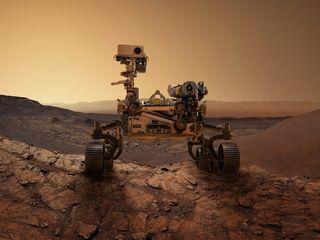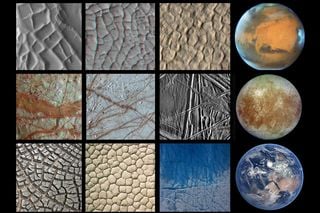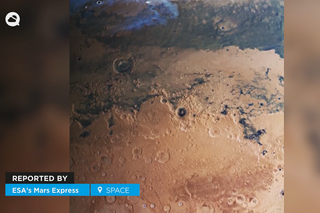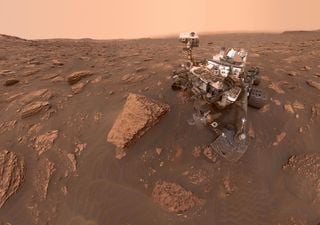Was there life on Mars millions of years ago? NASA's Curiosity rover has discovered new organic compounds.
A recent discovery by the Curiosity rover has excited the scientific community, as it has identified the largest organic molecules ever detected on the red planet.
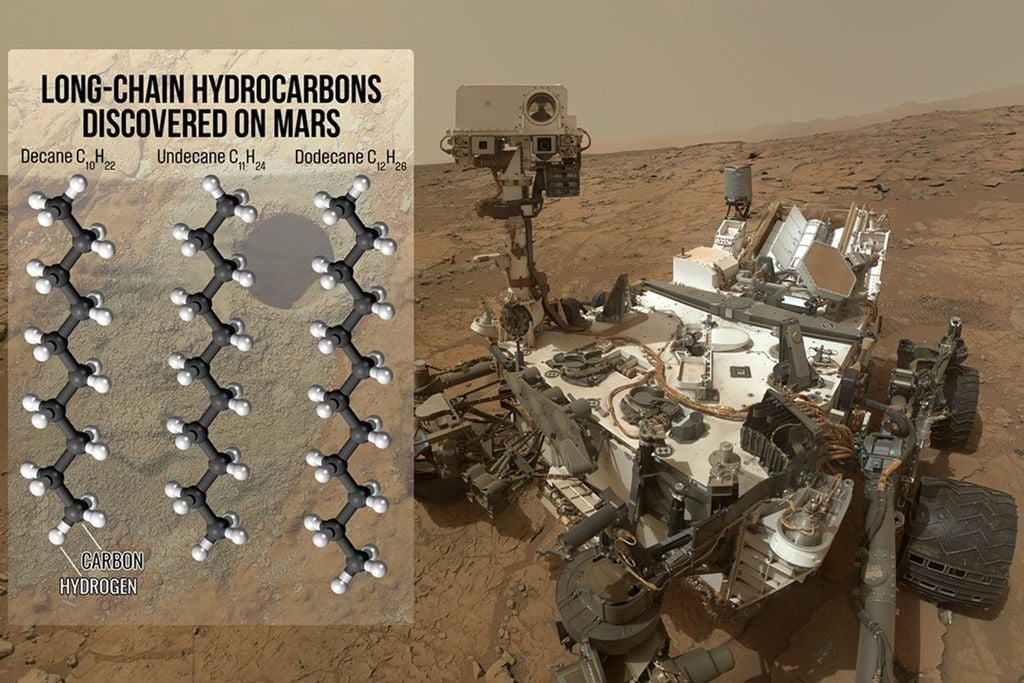
The molecules found, decane, undecane, and dodecane, contain 10, 11, and 12 carbon atoms, respectively, which has led scientists to believe that they are fragments of fatty acids preserved in the rover samples.
Fatty acids are fundamental components of life on Earth, as they form part of cell membranes. This discovery, published in the Proceedings of the National Academy of Sciences , suggests that prebiotic chemistry on Mars was more advanced than previously thought .
Although fatty acids can also be generated without the intervention of life, their presence is significant. They can originate through geological processes, such as the interaction of water with minerals in hydrothermal vents. This process could have occurred billions of years ago on Mars, when the planet had liquid water.
Scientists studying samples aboard the @MarsCuriosity rover have found the largest organic compounds on Mars so far. This raises intriguing possibilities in the search for past life and bodes well for plans to bring @NASAPersevere's samples to Earth. https://t.co/LiXs4y1MZ2 pic.twitter.com/njZgUbd2x7
NASA Mars (@NASAMars) March 24, 2025
It's not possible to confirm whether these compounds are the product of biological or chemical processes. However, the discovery of them in the Martian subsurface is a source of excitement for the Curiosity team, who, with this discovery, open the door to the possibility of finding signs of past life on Mars .
One step closer to the search for life
Previously, Curiosity had identified simpler organic molecules on Mars. However, the discovery of more complex compounds like these marks a significant advance. These molecules indicate that organic chemistry on Mars may have reached the level of complexity necessary for the emergence of life.
The study also offers hope for the discovery of biosignatures, molecules that can only form in the presence of life. This is significant because until now, it was feared that intense Martian radiation and oxidation could have destroyed these compounds over millions of years.
The discovery supports the idea of bringing Martian samples back to Earth for analysis with more sophisticated instruments. Here, in terrestrial laboratories, it would be possible to detect signs of past life that may have been preserved in Martian rocks.
This statement is from Caroline Freissinet, lead author of the study and a researcher at the French National Center for Scientific Research, who had identified organic molecules in Martian samples in 2015.
Cumberland: A Martian Chemical Treasure
The Curiosity rover drilled the sample known as "Cumberland" in May 2013, in a region of Gale Crater called "Yellowknife Bay ." This site, once an ancient lake bed, caught the attention of scientists, who decided to explore the area before heading to Mount Sharp.
The decision turned out to be a good one: Cumberland holds fascinating chemical clues about the history of Mars. Samples have revealed the presence of clay minerals formed in water , sulfur that can preserve organic molecules, and nitrates essential for life on Earth.
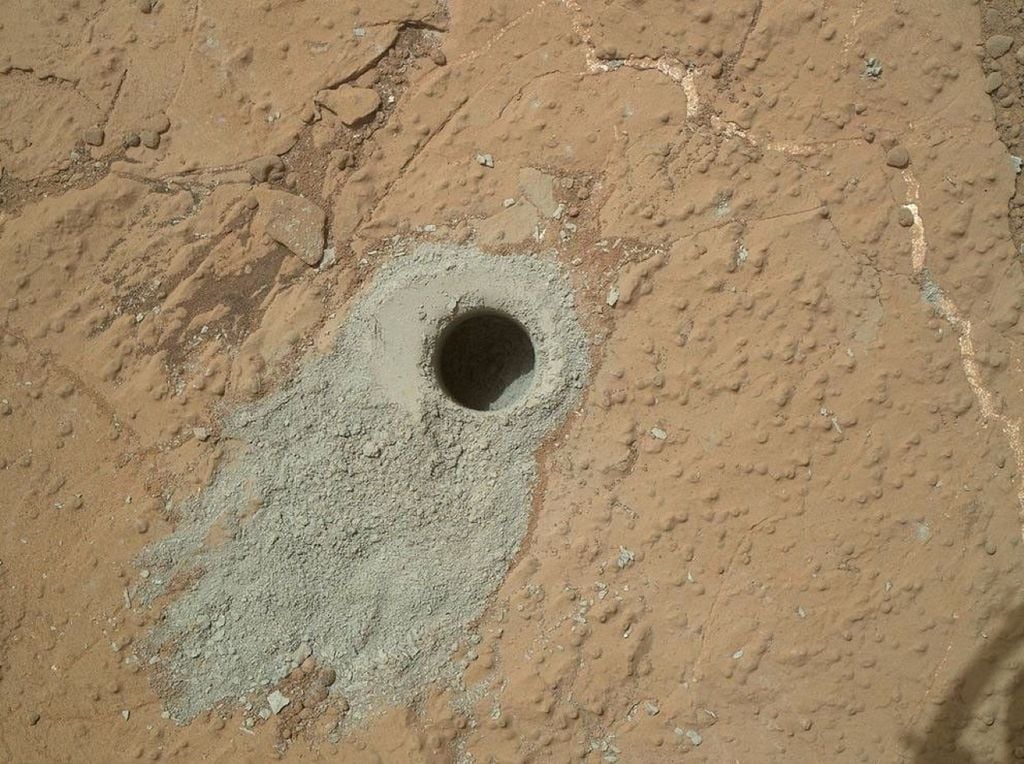
In addition, Cumberland showed traces of methane produced by a type of carbon associated with biological processes on our planet. This combination of ingredients creates an ideal environment for the formation and preservation of organic molecules on Mars.
Most importantly, scientists confirmed that Yellowknife Bay was an ancient lake that was able to concentrate organic molecules . These molecules were trapped in sedimentary rocks called shales, allowing them to be preserved for billions of years.
Experiments that reveal hidden clues
The discovery of organic compounds at Cumberland was an unexpected result of a separate experiment . The team was trying to search for amino acids, the building blocks of proteins, by heating the sample in Curiosity's SAM mini-lab. Although they didn't find any amino acids, they did notice small amounts of decane, undecane, and dodecane.
To understand where these molecules came from, the scientists reconstructed the reverse process. Their analysis indicated that these compounds could be fragments of longer fatty acids, such as undecanoic, dodecanoic, and tridecanoic acids, which degraded during heating of the sample.
This hypothesis was tested in the laboratory by mixing undecanoic acid into Martian-like clay and subjecting it to conditions similar to those in SAM. As expected, the experiment released decane, confirming that these compounds can be released from longer fatty acids.
I came, I saw, I detected some of the largest organic molecules on Mars using my onboard science lab.
— Curiosity Rover (@MarsCuriosity) March 25, 2025
It could be the best evidence yet that organic chemistry advanced toward the kind of complexity required for an origin of life on the Red Planet. https://t.co/gheRVvhmrd pic.twitter.com/2bWEkkK9zm
Interestingly, the fatty acids detected at Cumberland have between 11 and 13 carbon atoms, which is unusual in non-biological processes. Although SAM is not optimized to detect longer chains, these results reinforce the idea that chemical complexity on Mars may have advanced enough to allow the emergence of life.
News reference:
C. Freissinet, DP Glavin, PD Archer,S. Teinturier, A. Buch, C. Szopa, JMT Lewis, AJ Williams, R. Navarro-Gonzalez, JP Dworkin, HB Franz, M. Millan, JL Eigenbrode, RE Summons, CH House, RH Williams, A. Steele, O. McIntosh, F. Gómez,[...]& PR Mahaffy, Long-chain alkanes preserved in a Martian mudstone, Proc. Natl. Academic Sci. USA 122 (13) e2420580122, https://doi.org/10.1073/pnas.2420580122 (2025).





